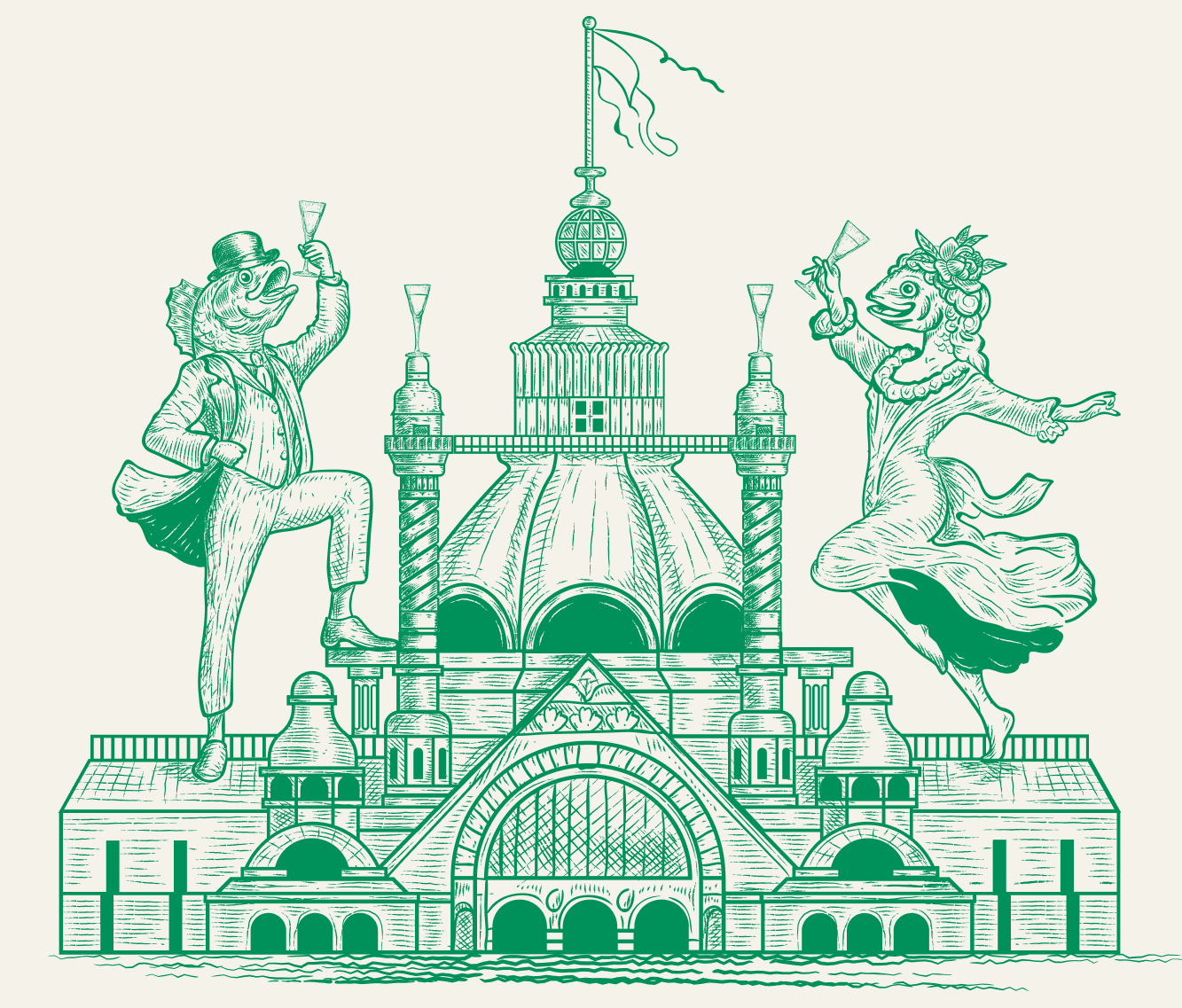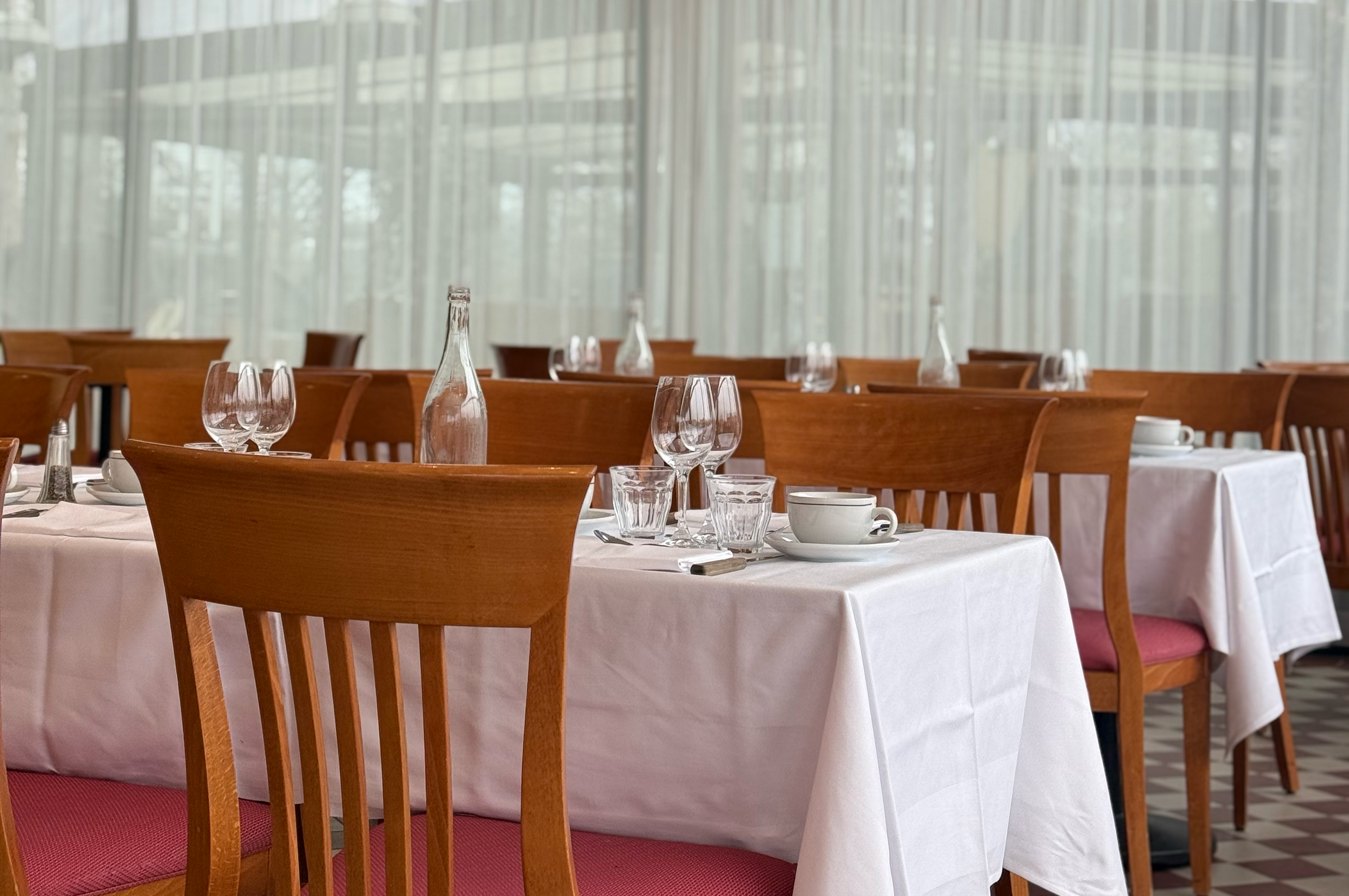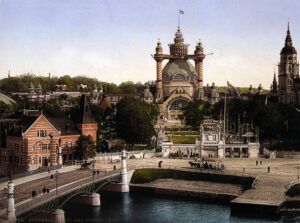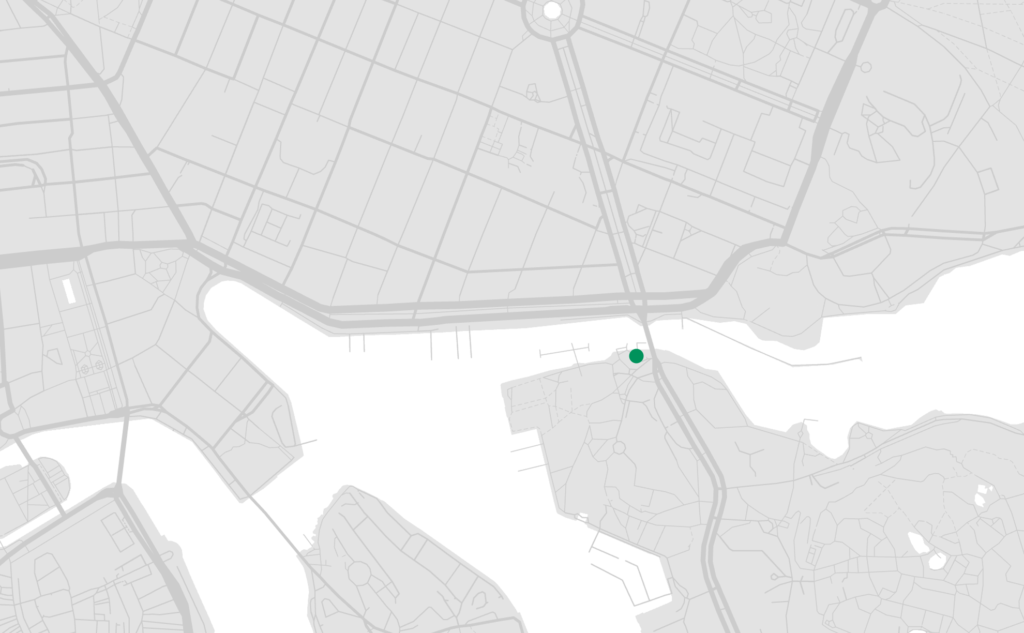

About our A la carte dishes
Pan-fried perch fillet, boiled potatoes & white wine sauce
Perch (Perca fluviatilis) is one of Sweden’s most common freshwater fish, traditionally caught in lakes like Mälaren. During the 19th century, perch was a staple in both urban and rural diets. It was commonly pan-fried and served with boiled potatoes. The addition of white wine sauce reflects French influences that entered Swedish bourgeois cooking during the same period.
Creamed dill potatoes, lemon & dill
Salting (or “rimming”) is a historic preservation method used in Sweden since the Middle Ages. Salmon has been central to Swedish cuisine, especially in coastal and river regions, and was considered a luxury inland. Creamed dill potatoes are a classic pairing in traditional Swedish home cooking, often served with salted or cured fish since the 180
Egg, asparagus, haricot verts, potatoes, capers, radishes & mustard vinaigrette
Hot-smoking has been used in Sweden since medieval times to preserve fish like salmon and eel. The combination of eggs, potatoes, and preserved vegetables reflects a long tradition in Swedish cuisine, often seen in dishes like herring salad or “gubbröra.” This modern salad draws on that tradition, incorporating spring vegetables and vinaigrette with continental influence.
Mashed potatoes, pickled cucumber & lingonberries
Swedish meatballs have been a part of the national cuisine since the 18th century, first appearing in cookbooks such as Cajsa Warg’s in 1755. The current form – small, round, and pan-fried – became popular in the 19th century. Served with mashed potatoes, pickled cucumber, and lingonberries, this dish became emblematic of Swedish home-style cooking during the 20th century.Vi är Stockholms fikadestination – för en kaffe i solen, ett samtal vid brasan eller en nygräddad bulle efter bastun.
Pepper sauce, haricot verts & French fries
Beef tenderloin became a hallmark of bourgeois cuisine in Sweden during the late 19th century. Influenced by French bistro traditions, the pairing of pepper sauce and haricot verts became common in Swedish restaurants by the mid-20th century. French fries were introduced around the same time and became a widespread accompaniment. The dish represents a Swedish adaptation of “steak frites,” rooted in local produce and service culture.
Cream, clarified butter & lingonberries
These dumplings, known as kroppkakor, originate from southern Sweden – particularly Småland, Öland, and Gotland. Traditionally filled with pork or mushrooms, they were a staple in rural households by the 18th century. Served with cream, clarified butter, and lingonberries, they reflect a regional approach to making hearty meals from potatoes and foraged forest ingredients.


Swedish Food Traditions – A Year of Taste and Custom
Christmas
Christmas was the great winter feast, often following the autumn slaughter. The table featured ham, pickled herring, smoked meats, sausages, and liver pâté. Rice porridge was once a luxury, as imported rice was expensive. “Dipping in the pot” – soaking bread in the stock from the ham – showed that nothing was wasted. The meal balanced abundance with thrift.
After Lent, Easter marked the return of spring. Eggs, newly laid, were central. Herring and salmon, both cured and smoked, were common. Jansson’s Temptation and roast lamb became popular later. The meal was simple but symbolic – of life, light, and a new growing season.
Midsummer celebrated the arrival of summer. New potatoes were boiled with dill and served with herring, sour cream, and chives. Crispbread, cheese, and eggs were natural additions. Strawberries with cream rounded off the meal – the season’s first sweet fruit.
From the late 19th century, crayfish parties became a late summer tradition, especially after fishing was regulated. Crayfish were boiled with dill crowns and eaten outdoors with hats and lanterns. Bread, Västerbotten cheese, and snaps were served on the side. A playful feast to mark summer’s end.
On November 10, especially in the south, Mårten Gås was celebrated. Goose was served with “black soup” (a spiced blood soup) and apple cake. This old harvest feast made use of what remained before the onset of winter.
Along Sweden’s west coast, lobster fishing became a prized autumn ritual. Starting the first Monday after September 20, freshly caught lobster was boiled and served simply with bread and butter, often with a glass of wine or snaps.
December 13 marks Lucia, a festival of light during the darkest time of year. Saffron buns and gingerbread cookies are served with coffee or mulled wine. This tradition spread in Sweden during the 20th century and bridges the old and the new – winter, waiting, and warmth.


About Stockholm 1897 – the location, architecture, and historical context
Stockholm 1897 is located by Djurgårdsbron, a historically significant site in the heart of Stockholm. In 1897, the area hosted the General Art and Industrial Exposition, a national world’s fair where Sweden showcased its advancements in industry, technology, arts, and food culture. With over one million visitors, the event helped define the area as a public space for innovation, cultural display, and national pride.
In the 1950s, the site was again used for a major public exhibition – the housing exposition at Djurgården – where prototype homes were presented as examples of future Swedish living. One of these houses later served as a model for many homes built in Gamla Enskede, Stockholm’s first garden suburb, established in 1908 as part of the early 20th-century movement for healthier and more spacious living environments.
That very house, with its modest, functional design, is today featured on the labels of all bottled beers from Gamla Enskede Bryggeri, which are served here at Stockholm 1897. The brewery, like the garden suburb it references, represents small-scale local production rooted in Sweden’s social and urban development during the modern era.
Stockholm 1897 is today a place where history and the present meet. It includes a Swedish restaurant focused on traditional dishes and seasonal ingredients, a craft bakery that combines heritage with international inspiration, and a sauna by the Djurgården canal – open all year round. The destination is open to locals and visitors alike, offering food, drinks, and experiences grounded in Swedish culture and everyday life.

GETTING HERE & MORE
Galärvarvsvägen 2, 115 21 Stockholm
08-661 44 88
To book a table online .
We are open MONDAY–SUNDAY 09:00–17:00
